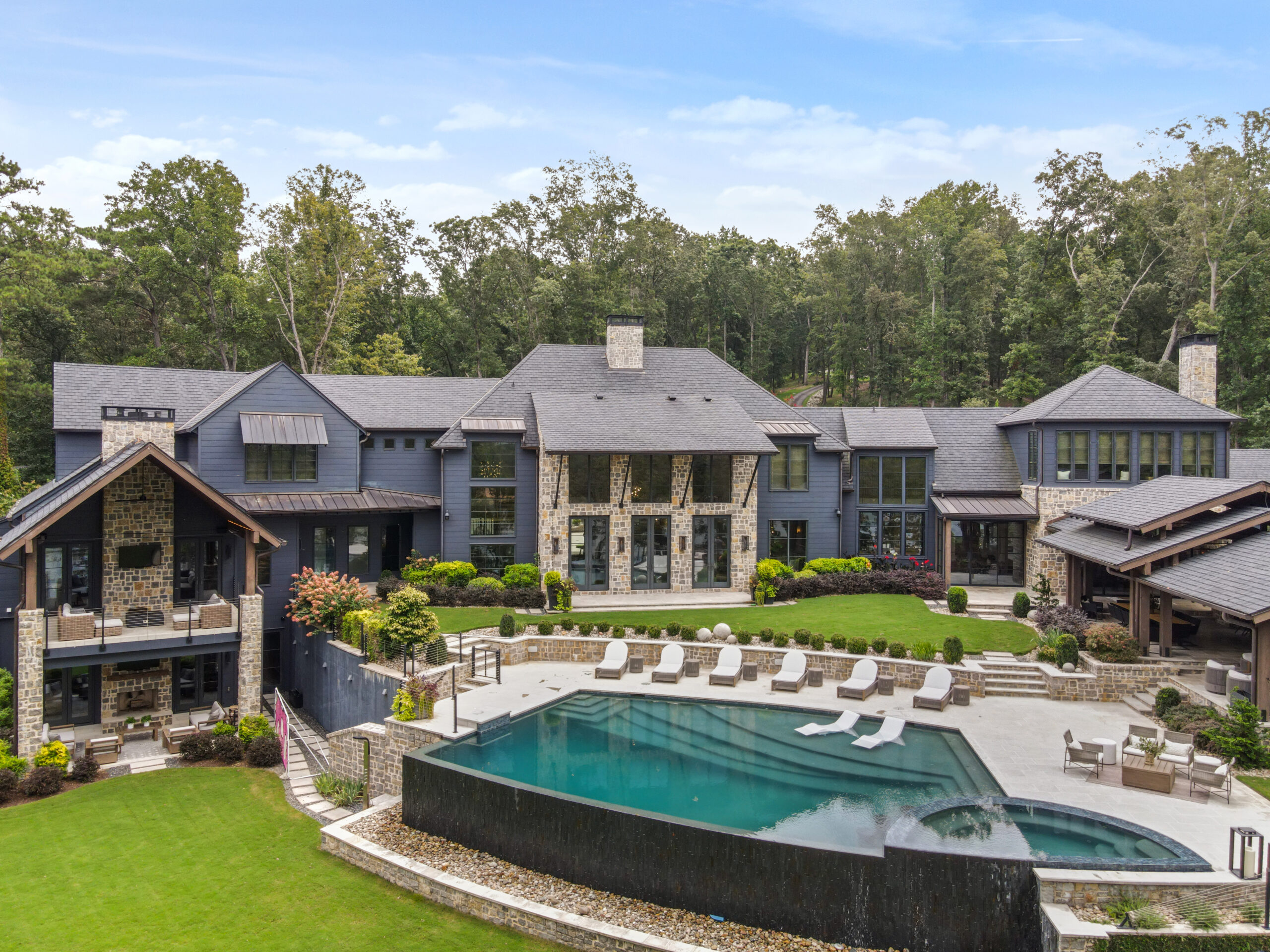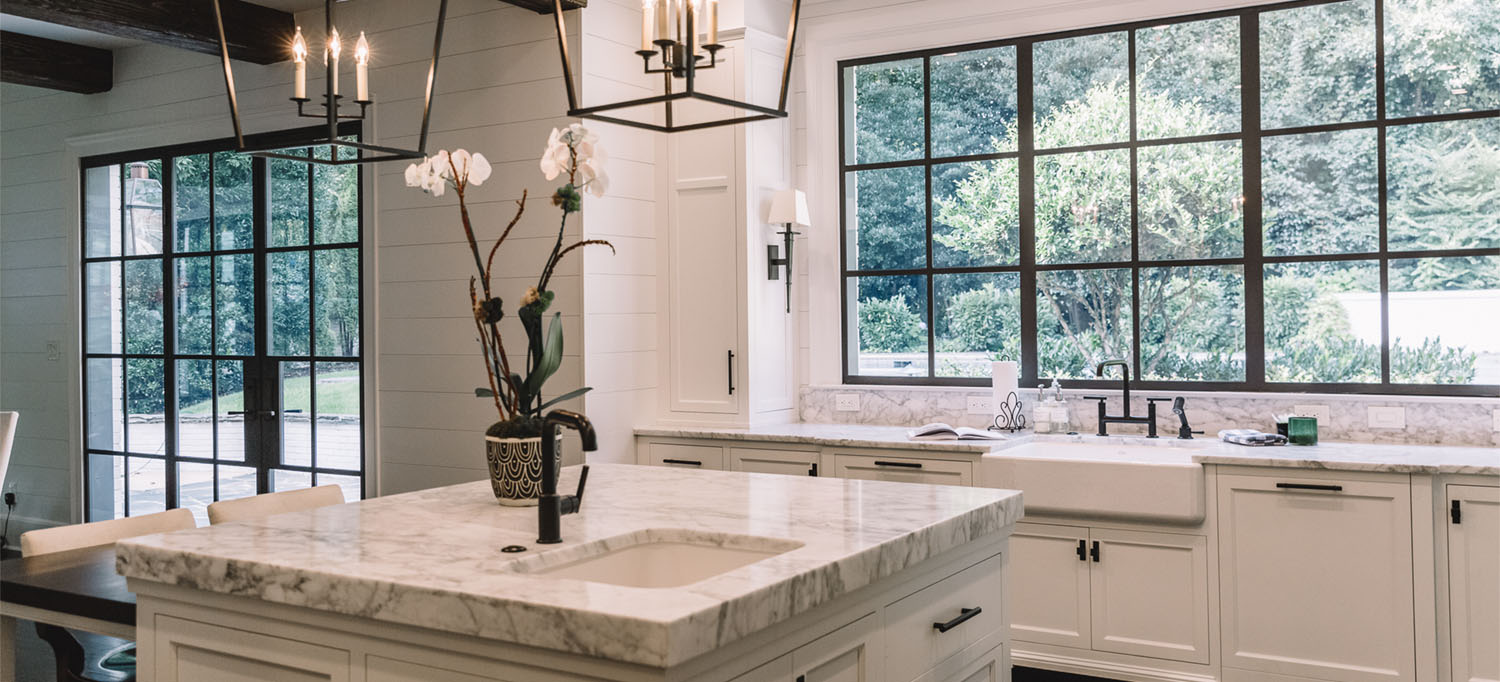Liveable Luxury: Tour the Lake Lanier home of Georgia Designer Addie Wilheit


Metal frame windows and doors – whether that metal is steel, aluminum, bronze, etc. – sometimes get a bad rap for not being energy efficient. This is because metal is an excellent thermal conductor, meaning the temperature on the outside frame of the window or door is brought inside the house.
Luckily, there’s a solution to this problem: thermal breaks. Adding a thermal break to a window or door prevents both heat and cold from transferring through the frames altogether, alleviating issues that might be caused by extreme environments. By controlling this transfer, thermally broken windows and doors improve energy efficiency.
Obviously, energy efficiency is a large driving factor behind purchasing a thermally broken window or door. However, there are other factors that come into play, including:
Before you decide if you need a to add thermal breaks to your windows and doors, let’s learn a little bit more about what thermal breaks do and how they function in different climates (including how that translates to code compliance).

The main job of a thermal break is to isolate the outside frame of a window or door from the inside frame, so that outdoor conditions do not impact the indoor temperature. This is most often accomplished by placing a polymer isolator (such as resin, polyamide, or polyurethane) that has a low thermal conductivity between the two halves of the metal frame.
By separating the interior and exterior halves of the frame, the thermal conductivity of the unit as a whole is lessened, thus slowing down the transfer of both cold and heat from the outside. For this reason, thermally broken units are typically recommended for the exterior of the home only, except in instances where extreme temperature shifts are experienced, i.e. the bathroom or a wine cellar.
The choice between a thermally broken unit or a non-thermally broken unit is purely functional and comes down to one factor: climate. Mild climates typically don’t get hot or cold enough for a thermal break to be necessary. However, in extremely cold or extremely hot climates, thermally broken units are highly recommended.
In places that get extremely cold, like New England or the Upper Midwest, there are a couple different reasons (of varying degrees of severity) to consider choosing a thermally broken unit, including condensation prevention and operability of the unit.
Condensation is a major concern in these cold climates. Without a thermal break, metal frames get just as cold on the inside as they are on the outside. When the frames become cold, the humidity inside the warm house can condense on the frames. Now, this might not be a huge deal to the homeowner who has tile or brick floors throughout their house. However, to the homeowner with wood flooring, condensation should be a concern, as it can run off the window or door and ruin the flooring.
The other major concern with metal frame windows and doors in cold climates is the operability of the unit throughout the winter. If it gets cold enough, non-thermally broken units can become so cold that the frames completely freeze and frost over. This obviously isn’t an ideal situation, especially in the case of a door.
On the other hand, in places that get extremely hot, like the Southwest, the heat transfer itself is the main concern. In fact, if it gets hot enough outside, frames without a thermal break will conduct the heat to the inside of the frame, which can potentially cause burns.
Though thermally broken units are highly recommended in these extreme climates, they can also be used in more mild climates as well and will prevent the same issues, such as condensation and heat transfer.
IECC code compliance can be a big hurdle to clear in many localities. Most non-thermally broken metal windows and doors will only be IECC code compliant in mild climates. However, as codes change from city to city, you should not expect to be able to use a non-thermally broken unit just because you don’t live in an area with extreme heat or extreme cold. Thermally broken units are much more likely to be IECC code compliant nationwide. Remember to check your local code to determine whether your desired unit is sufficient.
For most manufacturers, thermally broken units are not the standard, which means getting one comes with a higher price tag. For example, while a standard 5’ (W) x 8’ (H) steel double door in the middle of our price range will cost around $10,000 (depending on the options chosen), the same door in a thermally broken profile will cost roughly 25% more.
At the end of the day, deciding between a non-thermally broken unit and thermally broken unit comes down to a few factors. Typically, homeowners should consider these factors in the following order:
With these 3 factors in mind, you should be able to determine which type of unit is right for you.

Steel doors and windows; black framed glass; metal doors and windows. We hear a lot of different names for this new building material. And for good reason too. Steel windows and doors have soared in popularity over the past several years, to the point where they're showing up in design inspiration everywhere, from Pinterest to home renovation shows.
It’s an ugly truth of interior design: trends don’t last forever. If you’re decorating your house to follow the latest hot trend, odds are that in a few years, your space will probably be out of style. However, there are ways to protect your style from aging poorly. Following the few basic guidelines below will protect your interior design against the test of time and make your house welcoming and stylish for years to come.
Over the past few years, industrial interior design has made a resurgence. Exposed beams, hardwoods and concrete floors, and simple decorating schemes are now in vogue – and for good reason! The simple and clean lines of industrial interior design are timeless and are great for making a space feel open and airy. Whether you’re looking to redecorate (or even remodel) your home, or you’re just curious what’s making this new trend so popular, check out some of our favorite industrial design trends below!
When it comes to doors, most people don’t given them much thought until faced with having to make choices for a new home. There are so many options to choose from for style, color, function and material. Here are some of the latest design trends for doors, including entryways, interior doors and big openings with a look at what some of today’s hottest builders are adding to their new homes.
The front door and front entryway is just that – the entry point to your home and likely the first thing most people will see. It sets the first impression. It also is a very important factor in the home’s overall energy efficiency and aids in home security. When making a selection with front doors, you need to weigh a number of options to decide what is right for you.
Natural light – a door is an excellent place to introduce more natural light into your home, but you also need to consider security and privacy. The more window panes and uncovered openings, the more people will have access to see what’s inside.
Size – Bigger doors are certainly a hot trend right now with front doors getting taller and wider. This allows a home to connect more with the outdoor surroundings. One thing to consider when making this choice is the energy efficiency of your door and surrounding windows.
Color – A front door is an opportunity to make a statement and add a bit of personality to your home. We’re seeing more and more color choices pop up in addition to darker, bolder colors – black and rich shades of blue. Steel doorway systems are extremely popular today for their narrow sightlines and rich black hues.
Interior door options are almost limitless, as the concerns you may have when selecting an exterior door – energy efficiency, privacy, security, etc. – don’t exist. When it comes to these doors, style reigns supreme. One trend that has taken off over the past several years is the sliding barn door. Sliding doors work great in smaller spaces and flex rooms as they are a great space saver. Sliding barn doors, in particular, add a rustic and natural element that can also serve as a partition to divide up an open floor plan.
When it comes to today’s home, bigger is better. Builders are now making door systems that nearly disappear as the indoors and outdoors seamlessly blend together. This means large panes of glass and ultra-thin frames. Steel is a popular material to achieve this look but can be quite heavy depending on the desired size. There are clad and vinyl door manufacturers available that have been able to achieve that same epic focal point but in a lightweight material. And with multiple color options available, it is sometimes hard to differentiate from a distance between the two.
Leave All Doors Open to Possibility
So when making a choice about doors for your home, think about what’s important to you – privacy vs. an abundance of natural light. Consider the location of the doors around your home and whether the outdoors are something you want to invite in or are something you’d prefer to leave out. While some of these trends may continue in popularity for years to come, others will change and more will come. What’s important is that you choose something that you love and are drawn to for reasons that work best for you and your family.
Steel windows and doors are a significant investment for the custom home that come with two big expectations: performance and longevity. Unfortunately, this is not always the case. Low-quality steel products carry a higher risk of rust, warping, leakage, and difficult repairs. And getting a product that is high quality is not always easy – many low-quality products are difficult to differentiate in photos, and are often marketed as a high-quality product than they really are.